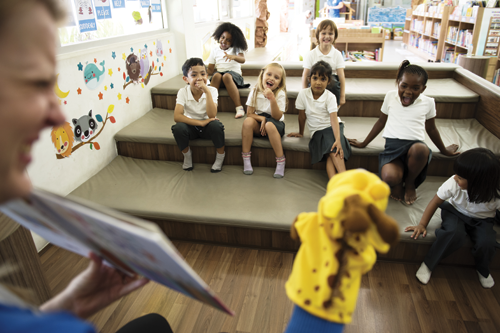
By: Shadi Bushra
When I returned to Minnesota three years ago, I didn’t think I’d be here longer than a month. While I was looking forward to seeing family and friends, I had no plans to cut short my career as a foreign correspondent in the Middle East and Africa. But then I took some short-term assignments working at my old high school as an educational assistant for students with emotional/behavioral disorders (EBD) and developmental/cognitive disabilities.

Those experiences made me realize two things: First, the variety of educational technology tools available to students and teachers has been transformative for many students who may have been left behind without them. The second lesson was that I didn’t need to go across the world to find stories worth telling; the stories of the students, the educators, and the many organizations that make modern education possible are compelling, and telling those stories can often be the first step in taking action to keep changing education for the better.
When I first walked into Burnsville Senior High School with my “Staff” lanyard bouncing around my neck, I took in the most visible changes since I had been a student. There was a new wing, new security, and nicer lockers. But before my first day was over, it was clear that the infrastructure of the place was the least exciting development in the eight years since I graduated. There were laptops, tablets, and smart boards in just about every room, or at least available to every teacher.
What was most striking to me wasn’t the availability of the technology, but how educators used it in their classrooms. Some still used only textbooks and handouts, except when absolutely necessary, while others seemed to hardly assign any work that didn’t involve a screen. Others still struggled to ensure students used the programs for educational purposes.
It wasn’t enough to simply make these tools available to students and teachers. The educators who were most successful were the ones who were always learning and always willing to reach out to the edtech provider for new resources or to provide valuable feedback on their products. I saw that the relationship between edtech and educators is symbiotic, and unless there is a robust feedback loop, the lifespan of a piece of technology would be brief because it did not take into accounts how it had helped or hampered teachers in the real world.
Fortunately, I did more than just gawk at all of the new tech in the classrooms. My focus was on the EBD students, and my job was to help them get the most out of their school day by keeping their more antisocial and self-destructive tendencies in check. Some would tear into you if they felt you were just another adult trying to bully them into submission to some arcane rulebook. Others would sleep in class or stay silent the whole day. Each one’s circumstances were different, but a common thread was that they seemed to have pigeonholed themselves, as burnouts, or dunces, or class clowns, or tough guys.
The kids had started believing the stories others told them about themselves and no longer saw themselves as a central character in their own narrative, or at least not as a character with any agency. Whenever I could, I tried to get them to recast themselves in a more positive light. Watching the difference between those who tried to tell themselves better, more honest stories and those who did not, drove home the point that stories not only matter, they can be the difference between success and failure for students, educators, and organizations.
Now that I’m outside of the schools, but still looking to shape the education system that my own kids will join in a few years, I often refer back to the skills I spent years honing as a journalist. When I was reporting, writing and photographing in New York, London, and Cairo, I asked myself two questions: How was I going to find a good story to tell? And how was I going to tell that story? What drew me to PRP in the first place is that those are the same questions we ask around here.
That’s why, in addition to everything I learned as an educator, I’m grateful for that experience for another reason: Knowing the students’ stories means that I can help others who seek to reach those kids and those who work with them. So as I apply what I’ve learned as a journalist and an educator to my role at PRP, I see it as a continuation of my lifelong passion for telling stories that will make this a better world for my own children and children everywhere.
Thanks for sharing!
PRP Group, a Hawke Media Company, is an award-winning full-service education PR and marketing firm serving the pre-K–12 and higher-ed community.